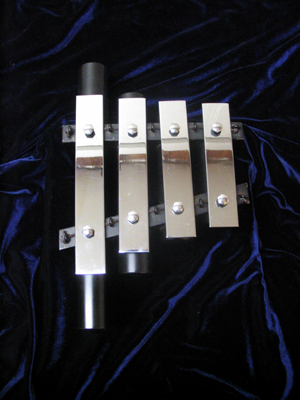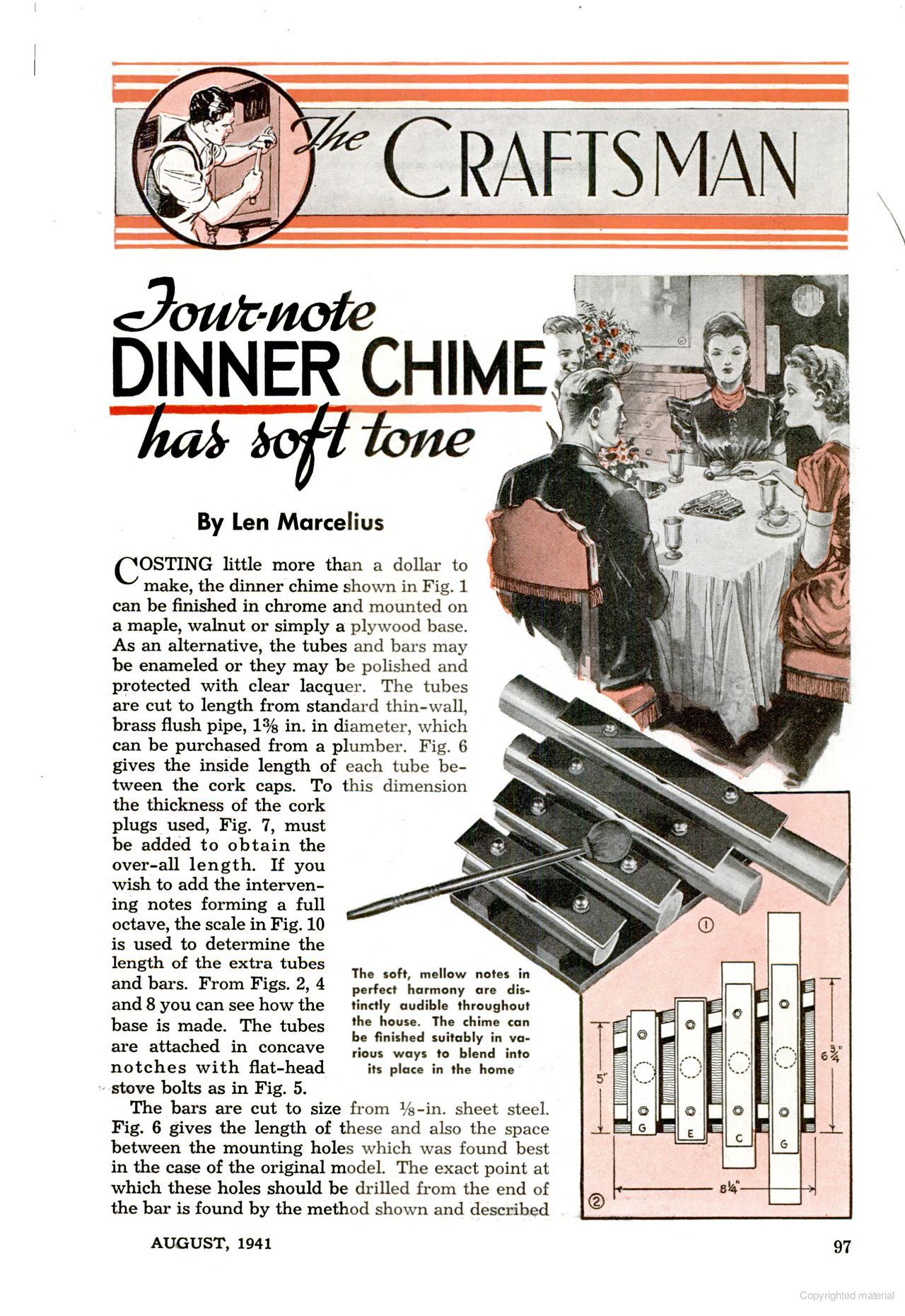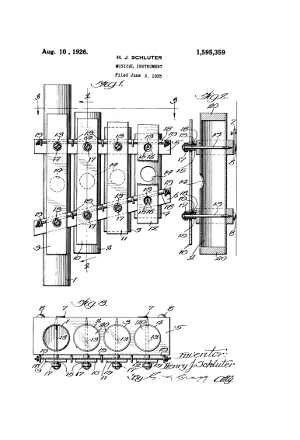the deagan 200 series dinner chime

A relative newcomer to the lineup in the late 1920s, the 200 Series was the least expensive dinner chime in the Deagan fold. The 200 Series consisted of four chime plates tuned in ascending order to the notes G, C, E, and G and mounted above brass tubular resonators. The two G notes were an octave apart, and the C was one octave above Middle C. This is the chime heard on the earliest recordings of the NBC chimes, the seven and five note sequences from 1929 through 1931. (Mention of a four note sequence occurs in NBC timelines, but no recordings of that sequence have ever been made public.)
This chime was also the one said to have been adopted by WSB by General Manager Lambdin Kay at the suggestion of singer Nell Pendley, who is credited with having given him the set that is now on display in WSB’s museum; however, research done by this writer suggests that Kay originally used a tubular Deagan 3003 Military Dinner Call before he adopted his famous dinner chimes; the latter were not patented until at least four years after his first usage of chimes is documented. (More details on the Chimes As Radio Identifiers page.)
The 200 Series dinner chime was sold in quite an array of colors in its early years, later tapering off until by the end of production it was only available with brushed gold chime plates above ivory resonators. The full list of colors (not all were produced at the same time), and their prices, are:
- 200—Mandarin Red base with black chime plates—$6.00
- 201—Bronze base and chime plates—$6.00
- 203—Black base with chromium chime plates—$7.00
- 204—Ivory base with chromium chime plates—$7.00
- 205—Ivory base with brushed gold chime plates—$7.00
- 206—Red base with brushed gold chime plates—$7.00
- 207—Blue base with brushed gold chime plates—$7.00
- 208—Van Dyke Brown base with ivory chime plates—$6.00
- 209—Egyptian Green base with ivory chime plates—$6.00
This writer has recently taken his 200 set apart for cleaning, and in so doing discovered why the tubular resonators and wooden frame are always the same color: they were first assembled, then spray–painted as a finished unit before the support cables and chime plates were installed.
Because of its low price and “smart design”, as the advertising material boasted, the 200 series became the flagship instrument of the Deagan Dinner Chime line. By the 1950s it was being billed in catalogs as “The World’s Most Popular Dinner Chimes”. Former Deagan Master Tuner Gilberto Serna, who started Century Mallet Instrument Service in the original Deagan factory building, told me that by the time production of the 200 series ended in the 1980s, they were making three hundred a day, and the chimes were selling for $27.00 each.
build your own dinner chime

T he august, 1941 issue of Popular Mechanics included a guide to building your own four bar, four tube dinner chime. This appears to be almost identically modeled after the Deagan Model 200 chime, except it contains a backplate attached to the chime tube support rails, and the resonator tubes are attached to the rails rather than being inserted through them. This article appeared a couple of years before the expiration of the 1926 patent below, thus it was probably altered ever so slightly to avoid infringement.
Click the image on the left to see the United States Patent for the Deagan 200 Chime. (PDF file, courtesy of Google Patents. Opens in new window.)
